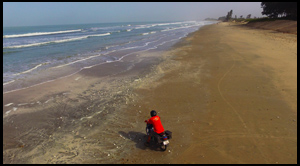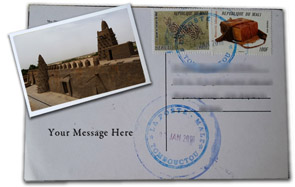All of these things happened last week: a passenger plane was blown out of the sky, villages were attacked and overrun, police choked a man to death, warning charges exploded on houses before real bombs fell on them, tanks fired on neighborhoods (later, a hospital), and a woman was stoned to death for adultery.
We have images and stories or at the very least glimpses of all these events. We can have them all at the same time, too. On twitter, where I get most of my news, they cascade down the screen in an infinite stream.
You look at history, and the world is apparently becoming less violent. But the access to violence as a spectator is increasing, and the level of ambient anxiety is through the roof.
Oh great. After the severed limbs from one place and mutilated children from another, just found in my TL a photo of a stoning.
— siddhartha mitter (@siddhmi) July 19, 2014
(By the way, you should follow Mr. Siddhartha Mitter if you are on twitter. He will drop insight on the France national football team in one tweet and the Newark mayoral race in the next, while dialing up occasional commentary in nouchi – Ivorian slang. You should read his writing, too.)
Twitter is great. I’ve met a number of interesting folks through those 140 character exchanges, and some have actually become good friends. I have discovered new things to listen to and to read. I’ve stumbled upon vital but rarely discussed bits of history. Twitter helps me stay informed. And while hashtag activism has its limits, we have all seen the power of widely shared stories and images.
But sometimes it’s just overwhelming. Like last week. On television, they can only feature one story at a time. On twitter, you can have it all at once. Bodies falling from the sky alongside Palestinian children shot from a warship.
So I’m scanning this stream of horror, and every now and then it’s interrupted. In this case, I’m taken to a Malian village by way of Boukary Konate (@fasokan), who recently launched a project called When the Village Wakes Up.
Boukary’s project involves cultural preservation and inter-village communication. One aspect of the project aims to harness the wisdom of village sages. Reading about the project (you can support it here) reminded me of some of my favorite proverbs and expressions in Bamanankan. It was good to think about these during this past week. A virtual trip to a Malian village was just what I needed:
N’i mako tε mɔgɔ la, mɔgɔ mako t’i la
If you need nobody, nobody needs you. – Another way of thinking about this: you need everybody, and everybody needs you.
K’an kelen kelen wuli
May we wake up one by one – This is another way of saying, pass the night in peace. Think about it. If everyone wakes up simultaneously, there is a good chance something has gone wrong. If you wake up one by one, nothing traumatic has happened.
Ji tε masa dɔn
Water doesn’t recognize a king – touché
Gabugu ka koro ni misiri ye
The kitchen is older than the mosque
N se
My power – this is no proverb, and I have written about this on the site previously, but it’s worth sharing again. Greetings in Bamanankan follow this format: “how do you face X?” So, “good morning” is “how do you face the morning?” When you ask a woman “how do you face the morning?” Her response is always the same: “N se.” It literally means “my power,” but the cultural translation is “my power always wins against time.”
Bamanankan/Dioula is a rich language, and it is one of the most widely spoken languages in a large area of the Sahel (namely, a good chunk of Mali, Burkina Faso and northern Cote d’Ivoire). Boukary’s project was a needed detour last week, and I look forward to being back in Mali later in August.
Top photo: Part of the royal court in Tiébélé, Burkina Faso. Source.





Thoughtful and provocative. Ambient anxiety … the pharmaceuticals’ dream.
Just reading this now.
Poignant piece Philodendron.
I’m holding onto those words.